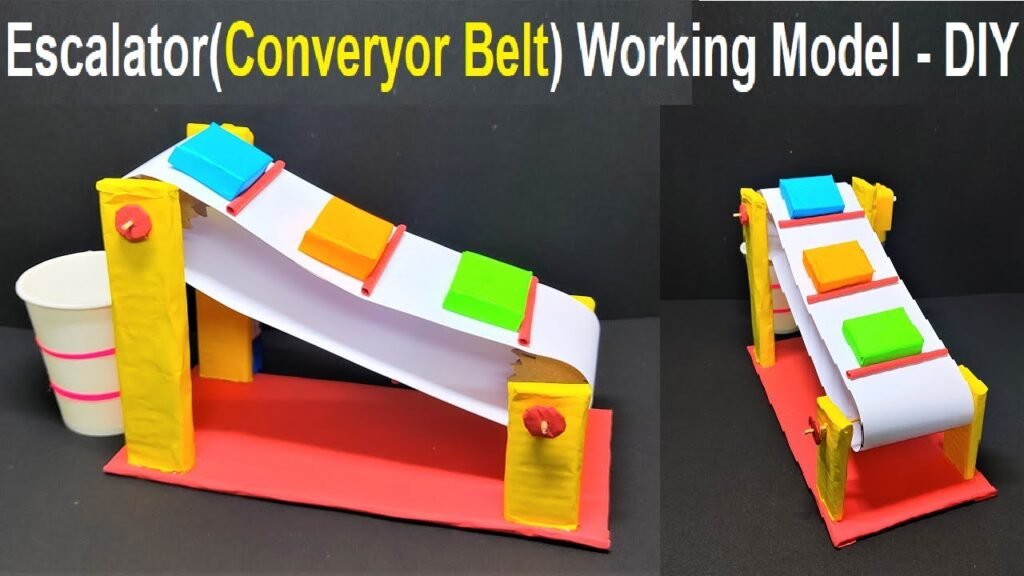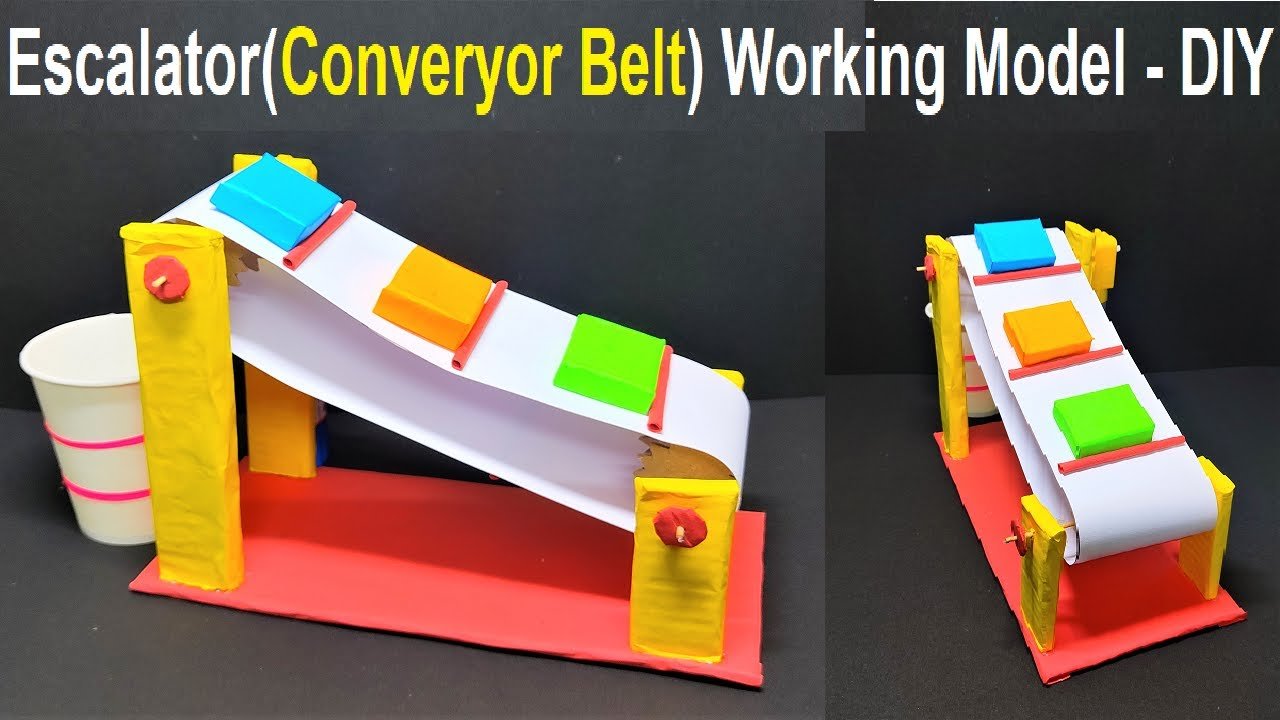Escalator Introduction:
An escalator is a moving staircase designed to transport people between different levels of a building. It consists of a continuously circulating belt or chain of steps that move in a loop, allowing individuals to step onto it at the bottom and be carried to the top.
Escalators are commonly used in places like shopping malls, airports, and metro stations to efficiently move large numbers of people between floors.
They operate on a system of gears and motors to facilitate the upward or downward movement of the steps.
Conveyor Belt Introduction:
A conveyor belt is a continuous loop of material that rotates around two or more pulleys. It is commonly used in industries for the transportation of goods, products, or raw materials from one location to another.
Conveyor belts are versatile and can be configured to move items horizontally, vertically, or on an inclined plane.
They are a key component in various manufacturing and distribution processes, facilitating automated and efficient material handling.
Introduction to the Concepts:
Both escalators and conveyor belts share the fundamental concept of continuous movement, but they serve distinct purposes.
Escalators are designed for the vertical transportation of people, providing a convenient and energy-efficient means of moving between different levels within a building.
On the other hand, conveyor belts are utilized in industrial settings to automate the transportation of goods, improving efficiency in manufacturing and distribution processes.
While escalators are a common feature in public spaces, providing a smooth and effortless means of vertical transit, conveyor belts are integral to streamlining production lines and logistics in diverse industries.
working model of an conveyor belt
Creating a working model of an escalator or conveyor belt can be a fun and educational project.

Below is a simple guide to help you make a basic conveyor belt model using common materials:
Materials Needed:
- Cardboard
- Rubber bands
- Wooden sticks or dowels
- Small plastic cups or containers
- Glue
- Scissors
- Marker
- Small toy figures or objects (optional)
Video Instructions Steps for Escalator Working Model:
1. Base Construction:
- Take a piece of cardboard and cut it into a rectangular shape to serve as the base of your conveyor belt.
2. Conveyor Belt Surface:
- Cut another piece of cardboard into a long strip. This will be the surface of your conveyor belt. The width of the strip will determine the width of your conveyor belt.
3. Attach the Conveyor Belt:
- Glue the strip of cardboard onto the base, creating a flat surface. Ensure that it is securely attached, and let the glue dry completely.
4. Conveyor Belt Movement:
- To simulate the movement of the conveyor belt, you can use rubber bands. Cut the rubber bands and glue them to one end of the conveyor belt surface. Stretch the rubber bands to the other end and secure them.
5. Pulley System:
- Create a simple pulley system using wooden sticks or dowels. Glue two sticks vertically on either side of the conveyor belt. Attach a third stick horizontally across the top, connecting the two vertical sticks.
6. Motor (Optional):
- To make your conveyor belt move automatically, you can use a small motor. Attach the motor to one end of the conveyor belt and secure it in place. Make sure the motor is aligned with the pulley system.
7. Attach Plastic Cups:
- Glue small plastic cups or containers at intervals along the conveyor belt. These cups will represent objects or items being transported.
8. Decorate and Customize (Optional):
- Decorate the cardboard base and conveyor belt with markers or any other materials you have. You can also add small toy figures or objects to represent items on the conveyor belt.
9. Demonstration:
- Once the glue is completely dry, turn on the motor (if using one) or manually move the conveyor belt to see the simulated movement. The plastic cups should move along the conveyor belt.
10. Explanation:
- During your presentation or demonstration, explain how a real escalator or conveyor belt works. Discuss the role of the motor or manual movement in making the conveyor belt move, the pulley system, and the purpose of transporting items from one end to the other.
This simple working model provides a visual representation of the basic mechanics of a conveyor belt, helping to illustrate the principles behind escalators and similar systems.

